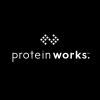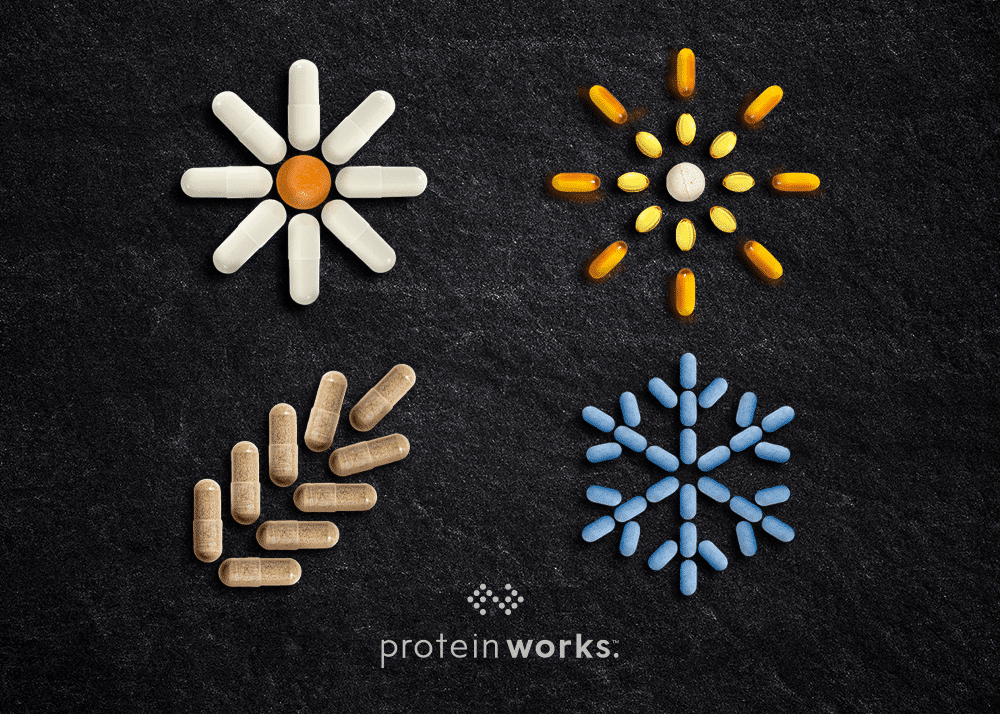
How Does Bulking Work?
What is bulking?
Bulking was typically a term only used in the professional bodybuilding world but as weight training has emerged as a popular method of keeping fit and healthy, it can also be a useful tool for the regular gym-goer like you and I.
Usually 3 – 6 months in duration, bulking is a phase of training where you purposely increase your caloric intake to such an extent that you are consuming more calories than your body requires, known as a calorie surplus.
This is very different to the other two main phases of training, known as maintaining and cutting, whereby the goal is to limit caloric intake to reduce fat mass. While these phases are important for wanting to achieve a lean, toned appearance, they are usually accompanied by a loss of muscle mass (1). This is because a chronic reduction of caloric intake induces a chronic decrease in muscle protein synthesis, limiting muscle growth (2).
In contrast, the purpose of bulking is to pack on muscle mass and countless studies have shown that when a high caloric intake is matched with intense weight training, large increases in muscle mass can be achieved (3).
However this increased caloric intake must be accompanied with intense training to maximise hypertrophy and gains. The purpose of these additional calories is to provide your body with the energy required to recover and rebuild muscle mass and without a strong training stimulus, these added calories will not be utilized and will simply add excess body fat.
In the other phases of training you may not make massive improvements in your lifts, but when bulking up you’ll be looking to progressively overload your muscles by either performing additional reps or increasing the weight nearly every session!
Great, so as long as I train hard I can eat whatever I want for 6 months?
Absolutely you can, but this is not what we (or science!) would advise. You may have heard of a ‘dirty bulk’ and this is essentially where you eat anything and everything with no regard for the nutritional value of what you are consuming. While this may be an effective method of weight gain and the freedom of eating pizzas and burgers all the time sounds appealing, this will have negative implications to your health.
Research has shown that a diet high in fried foods and saturated fat (found in fatty meats) can increase your risk of heart disease and diabetes (4). Similarly, consuming large amounts of sweets, cakes and fizzy drinks will also increase your risk of heart disease alongside increasing the development of high blood pressure, acne, depression and much more (5).
If that isn’t enough, such a diet can negatively impact your ability to train effectively and build muscle, while most likely promoting unwanted fat gain! During a bulk you will always pack on a little extra fat mass, but with the no-boundaries approach of a dirty bulk it is very easy to end up with a large amount of excess body fat that will be difficult to shift later on.
Dirty bulks are typically high in processed carbohydrates and sodium which leads to water retention and fluctuations in blood glucose levels which results in feelings of fatigue (6), ultimately effecting your work-outs.
What should I do instead?
We’d advise to undertake what is known as lean bulk which is essentially a dirty bulk but with some guidelines to follow!
The best place to start would be to work out the amount of calories you need to maintain weight and you can do this by calculating your basal metabolic rate (BMR), which is the amount of calories you need to match the energy requirements of your body. This can be calculated through a number of equations, one of which being the Harris Benedict equation:
For men: BMR = 10 x weight (kg) + 6.25 x height (cm) – 5 x age (years) + 5
For women: BMR = 10 x weight (kg) + 6.25 x height (cm) – 5 x age (years) – 161
So for example, a 5”9 (175.26 cm), 70 kg male aged 23 would have the below equation:
700 + 1095 – 115 + 5 = BMR of 1685 calories
To account for your energy expenditure through physical activity you then simply use the below table:
| Exercise Level | Details | Calculation |
| Little to no exercise | – | BMR x 1.2 |
| Light Exercise | 1-3 days per week | BMR x 1.375 |
| Moderate exercise | 3-5 days per week | BMR x 1.55 |
| Heavy exercise | 6-7 days per week | BMR x 1.725 |
| Very heavy exercise | 2 heavy workouts daily | BMR x 1.9 |
So if our above example had a moderate exercise level, their total energy expenditure would be 2611 calories (1685 x 1.55).
When bulking you want to aim to consume around 300 – 500 calories above your total energy expenditure, meaning this individual should consume 2911 – 3111 calories daily. Having this calorie goal will not only ensure you are eating enough, it will also prevent you from eating too much and accumulating large amounts of fat mass!
What exactly can I eat?
It is recommended that 50 % of your caloric intake should come from carbohydrate, 30 – 35 % from protein and 15 – 20 % from fat (7). Calorie counting apps such as MyFitnessPal are really simple to use and make tracking your macronutrient intake super easy!
Unlike a dirty bulk, your lean bulk should compromise of nutrient-dense foods to ensure your body can recover optimally and ultimately increase your potential for muscle growth.
Here are some examples of what you can eat to hit each macronutrient target:
Carbohydrate
Vegetables (Kale, Spinach, Asparagus, Broccoli, Carrots, Peppers)
- Each meal should contain large volumes of these to ensure you’re consuming sufficient micronutrients.
Starchy Vegetables & Grains (Potatoes, Peas, Breads, Oats, Quinoa, Rice).
- When cutting or maintaining weight you may want to avoid these carbohydrates, however these are calorically dense and therefore helpful in increasing your caloric intake.
Fruits (Apples, Bananas, Oranges, Berries, Pineapple, Pomegranate)
- While any healthy diet should include a fair share of fruit, be careful of consuming large quantities due to the large sugar content of natural fruit!
Protein
Meat, Seafood & Eggs (Chicken, Turkey, Beef, Pork, Cod, Salmon, Tuna, Whole Eggs)
- You can include slightly fattier cuts of meat than usual such as 15 – 20 % fat beef mince to help boost your caloric intake.
Legumes (Lentils, Chickpeas, Black beans, Pinto Beans)
- High in folate, potassium and iron, legumes are a great source of protein and are a healthy alternative to meat!
Fat
Dairy (Cheese, Milk, Butter, Yoghurt)
- High in calcium and are also a good source of protein.
Nuts & Seeds (Flaxseed, Sunflower Seeds, Almonds, Walnuts)
- These are a great source of healthy fats and also protein!
Oils & Nut Butters (Peanut, Almond & Walnut Butters, Olive Oils)
- High in omega-3 fatty acids, oils are a fantastic addition to healthy meals to boost the calorie profile of the meal.
Should I still use supplements?
In a word, yes!
Eating the calories required to bulk effectively and healthily is actually harder than it sounds, and often you may find yourself eating when you’re not hungry.
This is where protein shakes come up trumps. Mass gainer protein shakes are an easy method of consuming a large volume of calories in one go and are packed full of protein to help you hit your protein targets as well!
There are also two main supplements that can also help improve your physical performance in the gym in order to maximise gains. These are Creatine and Caffeine:
Creatine
Supplementing with creatine boosts your intramuscular phosphocreatine stores, which is your body’s primary energy source for explosive, high intensity movements. As such, this enhances your performance in the gym by enabling more total work or volume to be performed, providing a greater training stimulus for muscle growth (8)
Caffeine
Known to work via a number of mechanisms, caffeine is a common addition in pre-workout supplements. This is due to the increased pain tolerance associated with caffeine, which has been shown to reduce RPE (how hard you feel the exercise is) and therefore increase total workload (9).
The take home message
Bulking is an extremely effective method of enhancing muscle mass and strength, but it can be done incorrectly!
To ensure that you are not simply adding unwanted fat mass, you should consume 300 – 500 calories above your daily energy expenditure primarily in the form of healthy, nutritious foods.
That being said, here at TPW we are all about balance and if that means having the odd pizza and ice-cream sundae on the weekend… go for it!
References
- Mettler, S., Mitchell, N. and Tipton, K.D., 2010. Increased protein intake reduces lean body mass loss during weight loss in athletes. Medicine & Science in Sports & Exercise, 42(2), pp.326-337.
- McIver CM, Wycherley TP, Clifton PM. MTOR signaling and ubiquitin-proteosome gene expression in the preservation of fat free mass following high protein, calorie restricted weight loss. Nutr. Metab. (Lond) 2012; 9: 83
- Ribeiro, A.S., Nunes, J.P., Schoenfeld, B.J., Aguiar, A.F. and Cyrino, E.S., 2019. Effects of different dietary energy intake following resistance training on muscle mass and body fat in bodybuilders: a pilot study. Journal of Human Kinetics, 70(1), pp.125-134.
- Gadiraju, T.V., Patel, Y., Gaziano, J.M. and Djoussé, L., 2015. Fried food consumption and cardiovascular health: a review of current evidence. Nutrients, 7(10), pp.8424-8430.
- Yudkin, J., Kang, S.S. and Bruckdorfer, K.R., 1980. Effects of high dietary sugar. British medical journal, 281(6252), p.1396.
- Force, R.O.S. and Helath, R.O.S., The Glycemic Index In Sports Nutrition.
- Helms, E.R., Aragon, A.A. and Fitschen, P.J., 2014. Evidence-based recommendations for natural bodybuilding contest preparation: nutrition and supplementation. Journal of the International Society of Sports Nutrition, 11(1), pp.1-20.
- Kreider, R.B., 2003. Effects of creatine supplementation on performance and training adaptations. Molecular and cellular biochemistry, 244(1-2), pp.89-94.
- Doherty, M. and Smith, P.M., 2005. Effects of caffeine ingestion on rating of perceived exertion during and after exercise: a meta‐analysis. Scandinavian journal of medicine & science in sports, 15(2), pp.69-78.






No Comments yet!